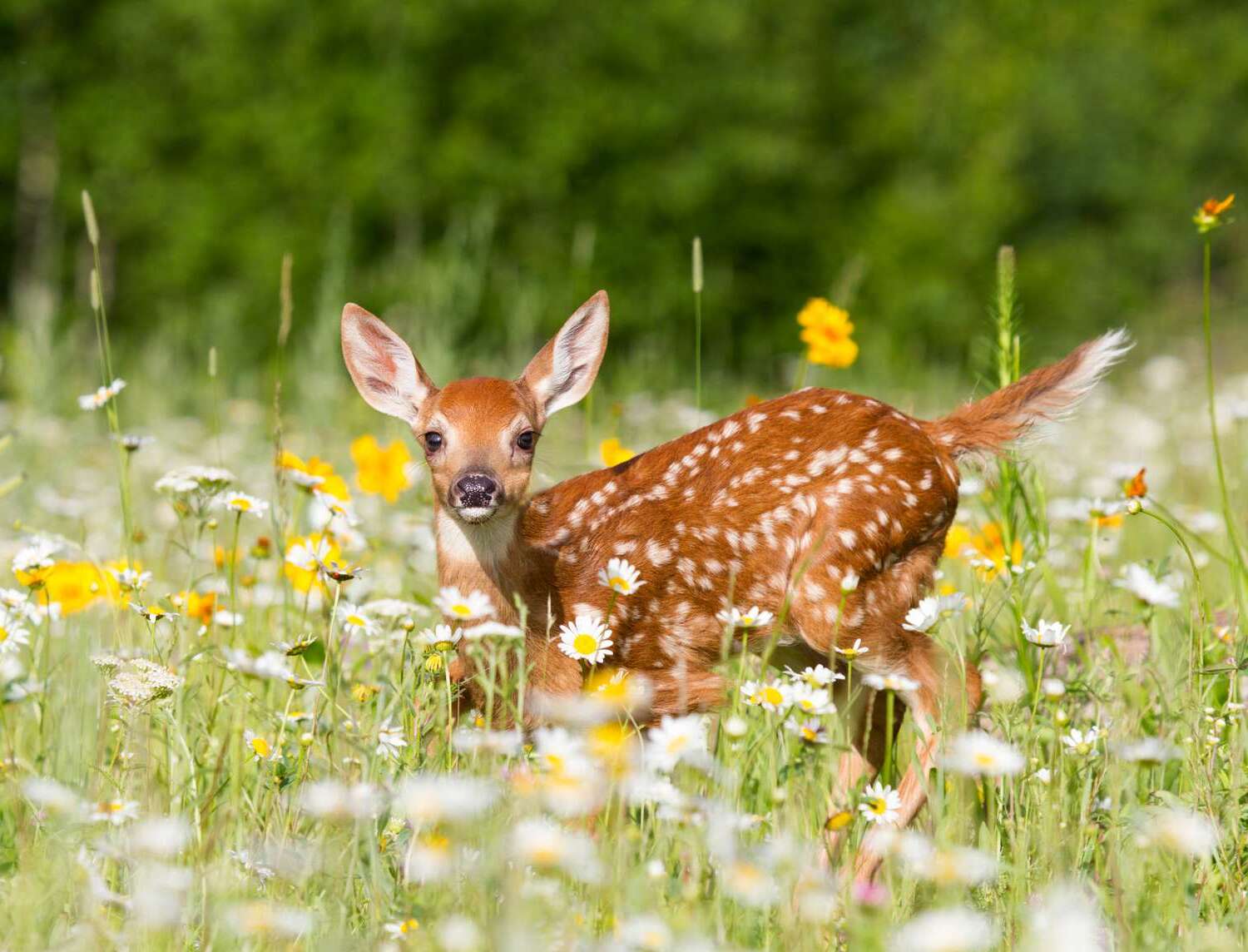
Ever wondered about the graceful creatures bounding through North American forests and fields? Yes, we're talking about white-tailed deer, those majestic animals that capture our imagination with their elegant antlers and swift movements. White-tailed deer are more than just picturesque beings; they play a crucial role in their ecosystems and have fascinating behaviors and characteristics that many of us are unaware of. From their unique survival tactics to their social habits and even their impact on local environments, there's a lot to learn about these animals. Ready to get up close and personal with one of nature's most interesting creatures? Let's dive into the world of white-tailed deer and uncover some facts that might just surprise you.
Key Takeaways:
- White-tailed deer are smart survivors, living in many places from forests to suburbs, changing their diets with the seasons, and using their white tails to warn friends of danger.
- These deer live in groups, have cool behaviors like swimming and scent marking, and play important roles in nature and culture, but managing their numbers is key to keeping balance.
Understanding White-Tailed Deer
White-tailed deer, known scientifically as Odocoileus virginianus, are among North America's most recognizable and widespread wildlife species. Their name derives from the white underside of their tails, which they raise as a warning signal when they sense danger.
-
These animals are incredibly adaptable, thriving in various habitats ranging from dense forests to open prairies. This adaptability has allowed them to extend their range even into suburban areas, where they often browse on garden plants and flowers.
-
White-tailed deer are herbivores, with diets that change seasonally. In spring and summer, they feast on a mix of leaves, twigs, fruits, and flowers. Come fall and winter, their diet shifts to more woody plants, nuts, and conifers.
The Social Structure of White-Tailed Deer
White-tailed deer exhibit fascinating social behaviors, often misunderstood or overlooked by casual observers.
-
Outside of the mating season, known as the rut, bucks (male deer) tend to form small groups or "bachelor herds." This behavior contrasts with does (female deer), which form larger, more stable groups often consisting of related females and their young.
-
During the rut, which occurs in the fall, bucks become more solitary or pair up with a doe for mating. This period is marked by dramatic displays of dominance, including antler wrestling and vocalizations.
Reproduction and Lifespan
The reproductive cycle of white-tailed deer is a key factor in their population dynamics and management.
-
Does typically give birth to one to three fawns in late spring or early summer. Fawns are born with white spots on their coats, which help camouflage them in the dappled light of their forest habitats.
-
White-tailed deer can live up to 10 years in the wild, though most live less due to hunting, predation, and vehicle collisions. In protected areas, where these factors are minimized, deer can live longer, demonstrating their potential for longevity under ideal conditions.
White-Tailed Deer and Their Ecosystem Impact
White-tailed deer play significant roles in their ecosystems, affecting both vegetation and other animal species.
-
Through their browsing habits, deer can significantly influence forest composition and structure. Overpopulation in certain areas can lead to overbrowsing, which may harm native plant species and reduce biodiversity.
-
Deer also serve as prey for a variety of predators, including wolves, coyotes, and bobcats. This predator-prey relationship is crucial for maintaining balanced ecosystems.
Challenges in Deer Management
Managing white-tailed deer populations presents unique challenges for wildlife officials and communities.
-
In areas where natural predators have been eliminated or reduced, deer populations can grow unchecked, leading to conflicts with humans, such as vehicle collisions and damage to crops and gardens.
-
Effective deer management often involves a combination of strategies, including regulated hunting, habitat modification, and, in some cases, fertility control measures to maintain healthy deer populations and minimize conflicts.
Fascinating Facts About White-Tailed Deer Behavior
White-tailed deer exhibit a range of behaviors that reflect their adaptability and survival strategies.
-
Deer are crepuscular, meaning they are most active during dawn and dusk. This behavior helps them avoid predators and human activity, which is typically lower during these times.
-
They communicate using a variety of sounds, body language, and scent marking. Vocalizations can include grunts, bleats, and snorts, while scent marking is used to establish territory and attract mates.
-
In winter, deer often form larger groups and seek out "deer yards" — sheltered areas with dense cover and available food. These communal living spaces help them conserve heat and protect against predators.
-
White-tailed deer are excellent swimmers and can use large bodies of water as escape routes from predators.
-
Their antlers, which are grown by bucks, are shed annually. This unique process allows bucks to grow a larger and more impressive set of antlers each year, depending on their health and nutrition.
The Significance of White-Tailed Deer in Culture
White-tailed deer hold a special place in the culture and traditions of many communities.
-
For centuries, Native American tribes have revered the white-tailed deer for its grace and beauty, incorporating it into their mythology, art, and rituals.
-
Today, deer hunting is a popular recreational activity in North America, contributing significantly to rural economies through license sales, equipment purchases, and tourism.
-
Beyond their economic and cultural significance, white-tailed deer also inspire wildlife enthusiasts and photographers with their elegance and the challenges they present for observation and study.
-
Conservation efforts for white-tailed deer have been remarkably successful, turning them from a species once threatened by overhunting and habitat loss in the early 20th century to one of the most abundant large mammals in North America.
-
Despite their common presence, white-tailed deer continue to fascinate and challenge those who seek to understand, manage, and coexist with them in our shared environments.
A Final Glimpse at White-Tailed Deer
White-tailed deer, graceful and widespread, hold a special place in nature's tapestry. From their unique antler regeneration to their pivotal role in ecosystems, these creatures captivate without trying. They've adapted to live in diverse habitats, from dense forests to open prairies, showcasing their resilience. Understanding their behavior, diet, and the challenges they face is crucial for conservation efforts. As humans, we share a responsibility to ensure their habitats remain intact and to mitigate conflicts, ensuring these majestic animals thrive for generations. Let's appreciate the beauty and complexity of white-tailed deer, recognizing their significance in biodiversity and our own lives. Their story is a reminder of nature's wonders and the intricate connections that sustain our world.
Frequently Asked Questions
Was this page helpful?
Our commitment to delivering trustworthy and engaging content is at the heart of what we do. Each fact on our site is contributed by real users like you, bringing a wealth of diverse insights and information. To ensure the highest standards of accuracy and reliability, our dedicated editors meticulously review each submission. This process guarantees that the facts we share are not only fascinating but also credible. Trust in our commitment to quality and authenticity as you explore and learn with us.


